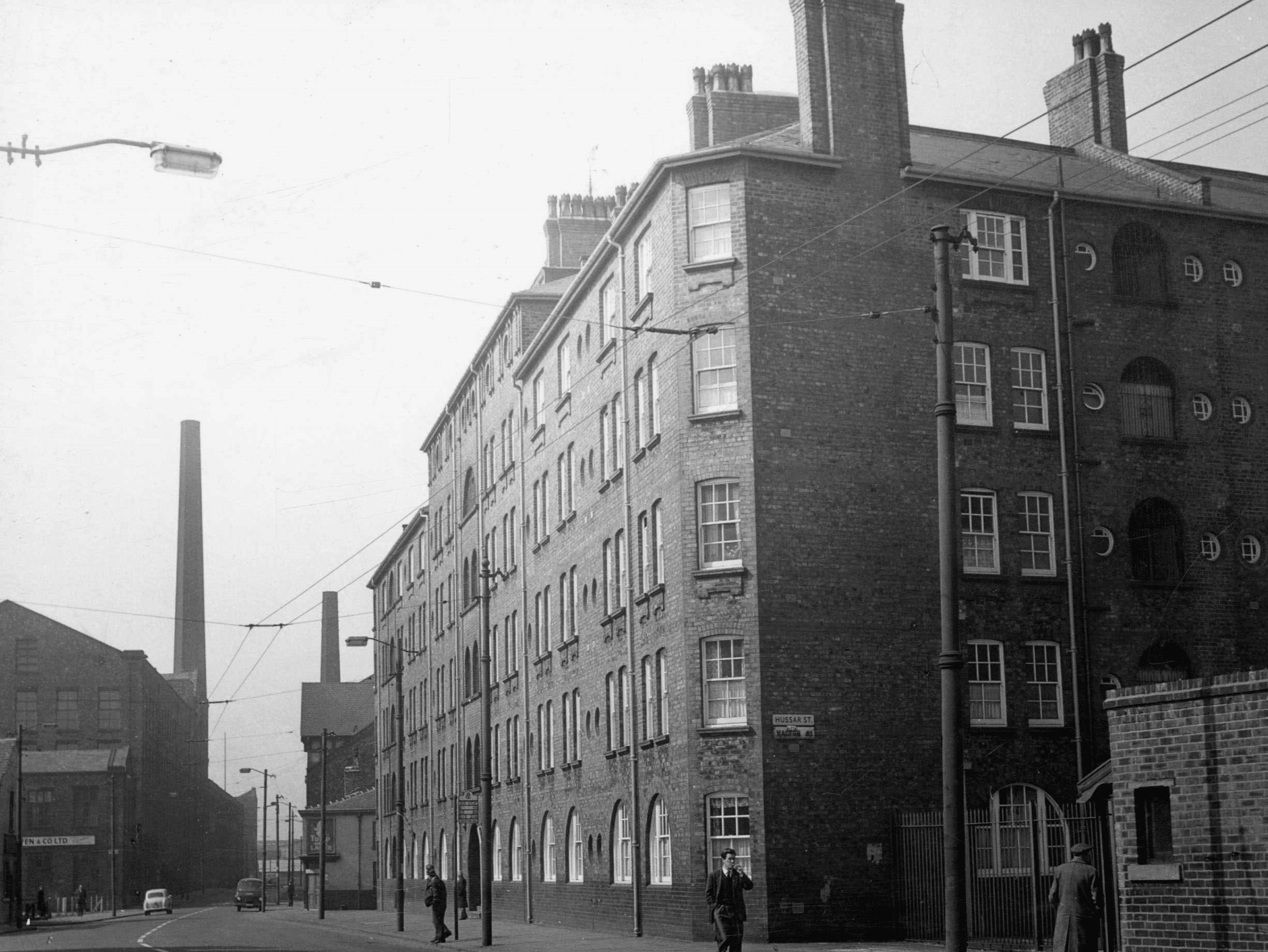Manchester, a city which likes to tell itself it has always led the laggards elsewhere, was building municipal housing long before the introduction of the Addison Act in 1919. But this unfussy display in the archives section of Central Library uses the Act’s centenary to tell a history of its council’s good intentions.
In the cramped acres of Ancoats, Manchester could lay claim to the world’s first industrial suburb in which terraces of back-to-back housing straggled in claustrophobic proximity to factories and workshops. Tellingly, the inhumane conditions endured by tenants (often just six toilets shared between more than 100 occupants) were not the sole impetus to the local Police Act of 1844, the first to address slum conditions. Rather, it was the lack of public order which such conditions fostered.
Concerns for public order, albeit on a revolutionary scale, were also one of the less altruistic considerations informing the Addison Act. Although it made good on (the then Prime Minister) Manchester-born David Lloyd George’s promise to those returning from the horrors of First World War trenches of “homes fit for heroes”, its provisions had at least one eye on a Russian revolution still too close for comfort and real anxieties that, without some concessions to the working classes, conditions might otherwise be ripe for like upheaval on British soil.
In a pattern that would be repeated across the century, the initiative fell short of its stated aims. Of the 500,000 homes trumpeted, just half were actually built, leading to the resignation of the Act’s architect, Christopher Addison.
 Still, the Act did lead to the broadening of Manchester’s canvas, beginning to relieve some of the constriction around the city centre. In particular, the council developed the land it had purchased in 1904, linking what was at that time the new city boundary of Blackley to its increasingly sclerotic heart with a tramway running down Victoria Avenue.
Still, the Act did lead to the broadening of Manchester’s canvas, beginning to relieve some of the constriction around the city centre. In particular, the council developed the land it had purchased in 1904, linking what was at that time the new city boundary of Blackley to its increasingly sclerotic heart with a tramway running down Victoria Avenue.
While the development of Blackley to the north and Burnage (and later Wythenshawe) to the south opened the city out, the density of occupancy and consequent squalor in its crowded centre remained problematic. The 1930 Housing Act led to a renewed emphasis on slum clearance and, though momentum was lost through the Second World War, the eventual realisation of these aims in the two decades that followed its end.
As before, though intentions were largely laudable, their realisation, epitomised by what became known as ‘Fort Beswick’ and Hulme’s infamous Crescents, was a hell without the compensations of continuity and community that had developed over time in the condemned terraces. Tenants, unconsulted and isolated, found themselves adrift and rootless on unfamiliar territory. When structural problems arose and design deficiencies provided the lack of observation that kindles opportunistic crime, this added insult to psychological injury.
Two decades into a century that’s lost its tarnish, it seems little less than a tragedy that city streets which give root to the oldest municipal housing still in occupation – Victoria Square Buildings, built a quarter of a century before the Addison Act – lack the space to shelter those left unhoused by the legacy of the Thatcher Government’s negligent attitude to the housing stock, considerably diminished by its ‘right to buy’ and its successors’ pursuit of a callous austerity that leaves the most defenceless least defended.
Andy Burnham’s mayoral ambitions are admirable, but whether these fine intentions match the best of yesterday’s visions or, whether by lack of consultation or compromise with the vested interests of the privileged classes, repeat their shortcomings, remains to be seen.
Images courtesy of Manchester City Council
The exhibition is on now. For more information, follow this link: manchester.gov.uk/libraries







